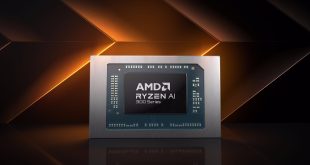KitGuru has spent time, possible too much time, analysing AMD's financial state in recent articles – but not really gone into any depth on Intel and what the future might have in store, financially, for the world's biggest CPU company and its investors. We pull out the trusty abacus and have a look at Intel's core numbers.
Intel's biggest challenge is growth. The traditional markets have stagnated – and the ‘we turn sand into gold' people still have close to zero footprint in the up-coming tablet and mobile markets.
Not ideal. So why are investors still so keen in the stock?
May 2nd 2012 saw Intel's share price touch just over $29, while today it is down to just under $22. That's a drop of almost a quarter. But, underpinning that movement, is the fact that Intel has maintained its price structure for traditional processors – in the face of underwhelming opposition from AMD.
Keeping prices high on Core parts, with a complete sell-through likely before Haswell launches in 2013, means that Intel can pay dividends in the 4% range. Do a quick scan of the high street banks and you will find that many are offering 2-3% interest on account. Which makes Intel attractive, today.
You can't just walk into the market and buy every share in a company at its present value, but that number still exists and we call it the market capitalisation (MarCap). This table shows the main players in the processor market, with their present MarCap and how that compares to Intel's value:-

.
Then there is the future.
While its present line-up can do little to halt the advance of ARM, Intel has an eye on the future – and that future seems to be in the cloud. While there certainly is an argument for cloud serving to happen on huge banks of relatively simple servers – that is more for the storage, docs and other minor processing facilities that companies will offer. Move to massive databases, online/realtime translation services or even image processing, video work or other, more advanced cloud-based tools – and Intel is certain that you will be needing the power of its Xeon range.
And the Xeon range brings with it higher ASP's (Average Selling Prices) and better profit margins. It also helps fund the on-going work into making future generations of desktop chips.
Just as we accept a different version of Hollywood beauty, compared to yesteryear (Keira Knightley/Natalie Portman Vs Maralyn Monroe/Gina Lollobrigida) – maybe we also need to accept a new kind of balance sheet as being attractive for 21st century IT. Maybe Intel has that balance sheet.
Essentially, the highly visual flash-bang-boom of the 90s has been replaced with a market that's much more sophisticated.

KitGuru says: Even if Intel doesn't manage to become number one for tablets and mobile, its ability to deliver the backend of the cloud is still strong. Can Intel get us (consumers) to use powerful online applications that preclude ARM/AMD etc in the datacentre? That looks to be the financial battleground for the next 5 years. One last question: Will Intel's MarCap fall off a cliff after the recession lifts and interest rates creep back up past 5%?
Comment below or in the KitGuru forums.
 KitGuru KitGuru.net – Tech News | Hardware News | Hardware Reviews | IOS | Mobile | Gaming | Graphics Cards
KitGuru KitGuru.net – Tech News | Hardware News | Hardware Reviews | IOS | Mobile | Gaming | Graphics Cards


